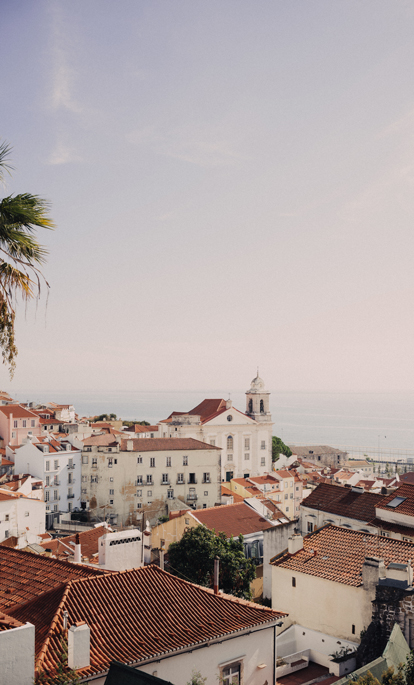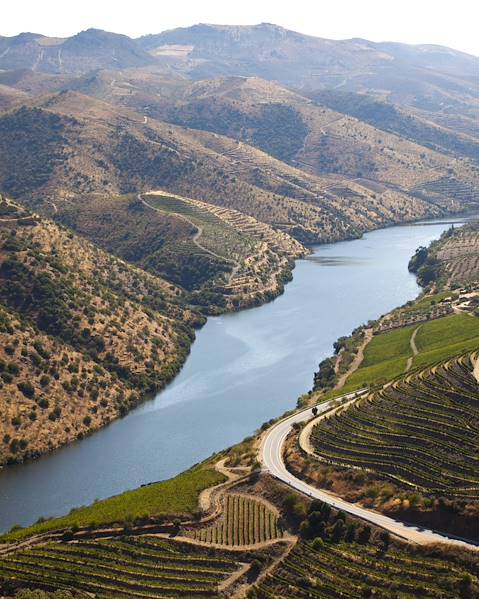Population
10,213,651 (2019)
Official language
Portuguese.
Language spoken
96% of residents have Portuguese as their mother tongue, but there are dialects including Azorean, Algarvio, Alentejo, Madeiran, etc.. The remaining 4% are made up of a mix of people who speak Spanish, Arabic, Galician, Mirandese, Calo (a Gypsy language) and Chinese. English is quite widely spoken.
People
The majority of the population is Portuguese and the biggest community of migrants to Portugal come from Brazil.
Religion
85% of the Portuguese population identify are Catholic but there are also Jewish and Muslim communities.
National Holiday
10 June: Camoes Festival (anniversary of the poet's death in 1580).
Holiday Schedule
- January 1: New Year's Day.
- February: Shrove Tuesday.
- March-April: Easter.
- April 25: Anniversary of the Carnation Revolution (1974).
- May 1: Labor Day.
- May 13: Our Lady of Fatima (anniversary of the first apparition).
- May-June: Corpus Christi.
- 10 June: National Day.
- 13 June: St. Anthony is celebrated in Lisbon (a joyous festival where grilled sardines are served and music is played on the accordion).
- August 15: Assumption.
- October 5: Day of the Republic.
- November 1: All Saints Day.
- December 1: Independence Day.
- December 8: Immaculate Conception.
- December 25: Christmas.
History
Portugal was first inhabited by Celts and then invaded by the Romans in the third century BC. The Romans created roads and buildings as well as coins and many ruins and artefacts can still be seen across the country. The Moors from North Africa invaded the Iberian Peninsula in 711 AD. They had control over southern Portugal but didn’t manage to take control of the north which became part of the Kingdom of Leon in the early 10th century. In 1095 the King of Leon gave Portugal to Dona Teresa (his daughter) and her husband, and when her husband died, Dona Teresa ruled as regent for her son. However, troubles arose when she married a Galician noble and the Potguguese nobility didn’t like the prospect of this union. In retaliation, her son Dom Alfonso Henriques led a rebellion against his mother and defeated Teresa at the battle of Sao Mamede. Alfonso worked towards Portugal’s independence from Leon and by 1140 he became King of Portugal. In the following hears, Alfonso started recapturing territory from the Moors, and in 1139 Alfonso defeated the Moors at Ourique. In 1147 he captured Lisbon and moved the border to the River Tagus, and later he captured territory south of the Tagus. The Catholic Church’s Papal diplomats then also acknowledged him as king by 1179.
The country enjoyed excellent trade due to its port, but was devastated by the Black Death in the mid 14th century and then pulled into a war in the late 14th century. When King Fernando died in 1383 his daughter Beatriz acceded to the throne alongside her husband Jian of Castille. Many Portuguese has a problem with this as they feared a union with Castille and the loss of Portugeuese independence. To avoid this, they rebelled and a war started with Castille that lasted for two years. Portugal made an alliance with England in 1386 which helped them to keep their independence, and Dom Joao then became king.
In the early 15th century, Portuguese navigators - particularly Prince Henry the Navigator - started to explore further afield and in 1415 the Portuguese captured Ceuta in Morocco, followed by landing Madeira in 1419 and The Azores in 1427, then the capture of Tangiers in 1471. By Prince Henry’s death in 160, Portugal had sailed as far as Sierra Leone, and in 1488 Bartolomeu Dias rounded the Cape of Good Hope.
Portugal's empire spreads and spreads and they country’s power only grows, with them controlling Brazil, Goa, Sao Tome and Malacca. However, back at home there were still tensions with Spain and with regards to the monarch. Spain finally recognised Portuguese independence in 1668 when the treaty of Lisbon was signed, but the trade economy was failing, with the Dutch taking the prized position as the central cog in the spice trade.
Tensions with France rose in the early 19th century with France’s invasion of Portugal, but with help from the British, Portugal kept hold of its land. This did not mean peace, however, as civil unrest became an issue. There were rebellions against the system which were met with resistance from some who disliked the liberal ideas and preferred a strong monarchy, and eventually civil war broke out and was fought from 1846 to 1847. While the rest of the world went through the Industrial Revolution, Portugal remained agricultural and the economy wasn’t strong. Come the end of the 19th century, more rebellions broke out against the monarchy as people moved towards the idea of a republic. In 1910 a republican revolution broke out with the King fleeing to the UK, but the living standards of the country didn’t change as the population has expected. In 1926, the military took power and set up a form of a dictatorship (with censorship and a government police force in place) and the economy improved. However, in 1974, the army staged a coup against this regime and the Carnation Revolution began (named after the red and white carnations worn in support), ending with democracy restored in Portugal. In 1986 Portugal joined the EU. In 1999 Portugal joined the Euro.
Policy
Portugal is a parliamentary democracy. Legislative power is held by the parliament (Assembleia da Republica) which has 230 members elected for four years. The President of the Republic is elected for five years by national vote, but the real holder of executive power is the Prime Minister (the leader who has parliamentary majority, appointed by the president).
Famous Portuguese
- Amalia Rodrigues (1920-1999) a Portuguese fadista (fado singer) and actress, with fado being a genre of music that can be traced back to Lisbon. The singer died October 6, 1999 and the country undertook three days of national mourning.
- Fernando Pessoa (1888-1935) was a Portuguese poet, writer and philosopher who is hailed as the leading poet who works in the Portuguese language
- Fernao de Magalhaes (1480-1521) Magellan achieved the first circumnavigation of the earth (completed in 1522) and is often seen as a symbol of the successes of all Portuguese navigators in the 15th and 16th centuries.
- Maria Elena Vieira da Silva (1908 to 1992) was aainter and ceramist who studied in Lisbon then moved to France in the late 1920s. In the 1950s she lead the European Lyrical Abstraction movement of art.
- Baruch Spinoza (1632-1677) was born in Amsterdam to a Jewish family of Portuguese origin. The family history of Spinoza - often referred to as the "prince of philosophers" - is emblematic of the dispersion of the Jewish communities in Portugal in the late Middle Ages.
- Cristiano Ronaldo (born 1985) is a successful footballer born in Madera.
- Aristides de Sousa Mendes (1885-1954) was a consul of Portugal in Bordeaux in 1940. In contravention to the orders of his government, he granted almost 30,000 Portuguese visas to refugees in a matter of just a few weeks.
Etiquette
Tipping is at your discretion and not expected. If you do want to leave a tip: for drivers we recommend 1 to 3 Euros per person; for guides, 5 Euros per person for a half day and between 7 and 10 Euros for a day. Restaurant tips are, again, at your discretion and 10% is a good guideline as a tip.
From spring to late summer, bullfighting is practiced throughout the country; the Portuguese bullfight is like the Spanish, except that the bull is not killed. Although many are against it, it’s good to be aware that it is going on so that you can prepare for it.
Shopping
Pottery, ceramics and porcelain are popular items to buy while in Portugal, with Vista Alegre, a former royal factory, being the most famous brand. Alternatively, treat yourself to embroidery, lace, linen or rugs to take home with you and, of course, the port and wine available in Portugal are excellent. The country is also famed for its decorative tiles and you can find traditional blue and white patterns or very colourful ones. Markets will have some (but they may not all be old so be cautious if you want a vintage example) but you’ll be able to find tiles everywhere if you want to bring some home. Some old and special tiles can be worth a lot of money.
Food
Home-cooking it always on the menu in Portugal and there’s usually plenty of fish. Appetisers include cheese, olives, butter and bread and they may be put on your table without you ordering them - if you eat them then you’ll be charged. Some traditional dishes to discover include caldo verde (a soup of kale or turnip, and potatoes, which is sometimes added a few slices of chorizo) which is the national soup; canja (chicken soup with rice or pasta, and giblets); açorda alentejana (soup with dry bread which is quenched), açorda of marisco is made with breadcrumbs, garlic, shrimp, clams; Arroz de Marisco (a kind of risotto with seafood); caldeirada, type bouillabaisse; carne de porco à alentejana (cooked pork with garlic, spices, lard and clams in their shells); Feijoada Choco (calamari and red beans).
The cataplana stew is very popular, and the cataplana Peixe (fish) is a real treat. Cod (bacalhau) is without a doubt the most popular ingredient and it is cooked in numerous ways, including bacalhau cozido (cooked with water, potatoes and sometimes chickpeas, drizzled with olive oil and a dash of vinegar); bacalhau assado (roasted); bacalhau assado na brasa (cooked on coals with potatoes); Bacalhau à Brás (cod, onions, potatoes, minced, scrambled eggs, black olives, parsley); and Bacalhau à Gomes de Sá (shredded cod, onions, potatoes, boiled eggs, olives, olive oil, garlic, parsley, a little milk, all baked and lightly browned).
Cheese in Portugal is also great with some particularly popular ones being queijo da Serra, ewe's milk (curdled thistle infusion) manufactured in Serra da Estrela; or Rabaçal, a goat cheese that perfume the herbas Santas (holy herbs); or Serpa (sheep), which owes its color to the repeated swabbing of oil and paprika. When it comes to sweets, pastries in Portugal are great. Toucinho do ceu has sugar, almonds, egg yolks, flour, butter, jam; Papo de anjo has jam, eggs, sugar, cinnamon; Barriga of Freira with sugar, butter, yolks. There’s also Arroz doce which is a rice pudding and a traditional meal to be shared during baptism or marriage. You cannot go to Portugal without tasting the famous Pastel de nata, an egg tart served warm and sprinkled with cinnamon and sugar.
Drink
Wine is incredibly popular in Portugal. Vinho verde is produced in the north which is very light, or the vinho maduro is a nice dry wine from the same area. Dao produces a light and fruity red wine, while the Reguengos from Alentejo, is a solid red, and muscatel makes a sweet wine aperitif. Port is a fortified wine from in the Alto Douro region that can be blended, with up to 50 varieties allowed. There are five main types of port: Tawny is aged five to seven years in barrel and is the most well-known port; Ruby is a young wine (two years old at the most) that’s fruity and lively. Then there are white ports which can be drunk along or with a mixer such as lemonade. The Vintage is the Rolls Royce of ports: it has two years in the barrel followed by bottle aging.
















